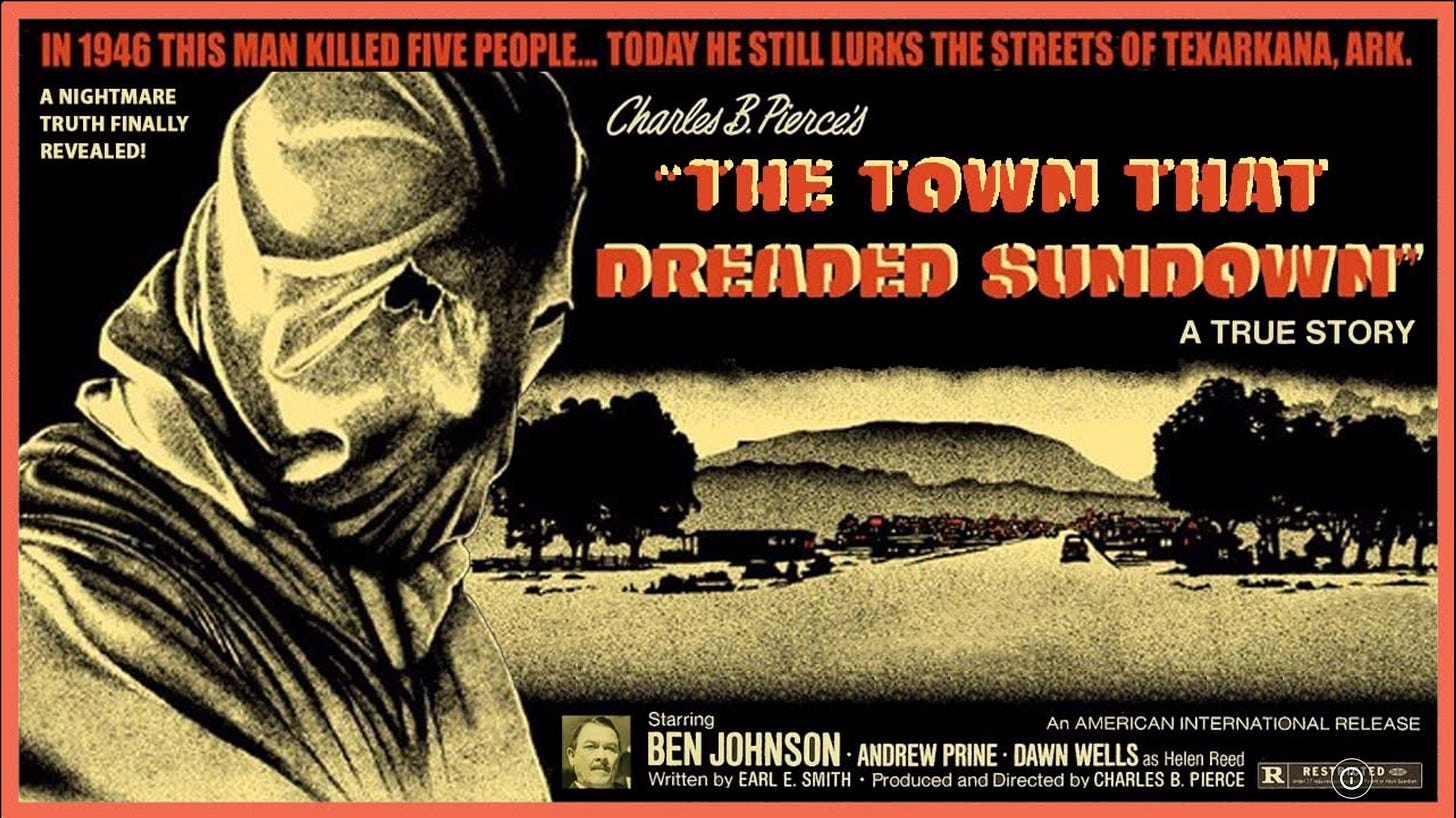plug: The Town That Dreaded Sundown (1976) + Zodiac (2007)
"I need to stand there, I need to look him in the eye, and I need to know that it's him."

Hey hey, comin’ atcha with another double-feature plug. Today’s bill: a proto-slasher based on a true crime story and a modern true crime classic with well-placed slasher elements.
The Town That Dreaded Sundown (1976)

Two years north of The Texas Chainsaw Massacre and south of Halloween, 1976’s The Town That Dreaded Sundown is one of those movies that immediately alters your perception of whatever movie timeline you had in your head before you saw it. It’s clearly breaking ground for the slasher boom of the ‘80s, but it’s also got a whole different look and feel than any of the other ‘70s horror flicks you could accuse of doing the same thing. It’s also distinct in that it’s loosely based on a true story. The Texarkana Moonlight Murders — a series of unsolved murders that took place in the Texarkana area at the border of Texas and Arkansas in 1946 — serve as a basis for director Charles B. Pierce to construct a mesmerizing film about a hopeful post-war community whose dreams of a brighter, all-American future are ravaged by a violent, unstoppable force erupting from their own backyard.
Pierce takes a pseudo-documentarian approach to the material, applying a news-like voiceover narration, lush, American Graffiti-esque visuals, and a strange yet undeniably entertaining amount of comic relief between the masked-killer carnage. The movie’s legacy is overshadowed by all the other slasher and slasher-adjacent horror films of the era, but its reflection of the post-Manson, pre-“Summer of Sam” years is no less significant. Check out this video by Ryan Hollinger for a more in-depth analysis of where The Town That Dreaded Sundown sits in the American horror canon.
Zodiac (2007)

With The Town That Dreaded Sundown, Charles B. Pierce succeed in filtering a serial killer story through his own cinematic vision — making it memorable by imposing a strong sense of time, place, and communal dread. David Fincher does the same thing with Zodiac, and while both directors take significant liberties with the non-fiction source material at hand, Fincher goes to great lengths to lay all the important real-life details of the Zodiac murders out on the table, both literally and figuratively. Zodiac levitates on an intoxicating procedural drone that I’ve only ever experienced in other Fincher films, periodically augmented by shocking murder scenes staged and executed with a style and poise that both mirrors and reconfigures the whole idea of a “kill scene” in a slasher film. I find these scenes both repulsive and breathtaking as a slasher fanatic and budding true crime enthusiast.
I’m still not sure whether it’s a good idea to actually watch both these movies in one sitting, if only for the fact that Zodiac’s 2 hr 37 min runtime is plenty on its own. But I think these movies are worth thinking about as two sides of the same coin — that familiar American tale of a masked killer and the corrosive, all-consuming effects that an unsolved catastrophe can have on the people standing in its wake.





Town That Dreaded Sundown is a fun movie and, honestly, I think Zodiac is my favorite Fincher movie. It’s super captivating but also he nails a particular feeling and aesthetic that I always have a hard time describing but totally love.